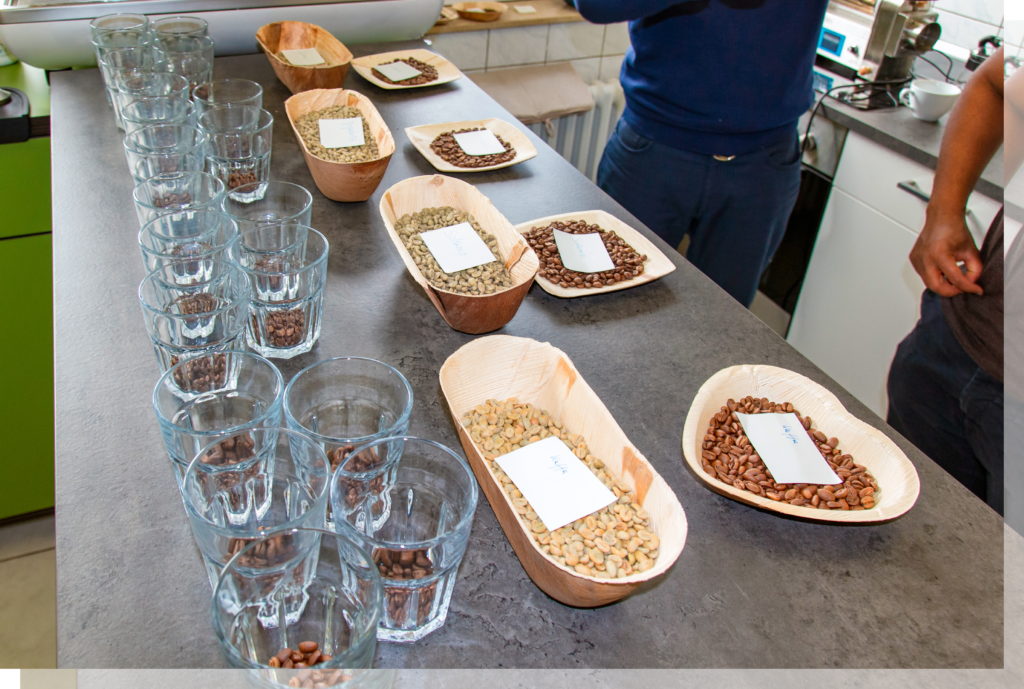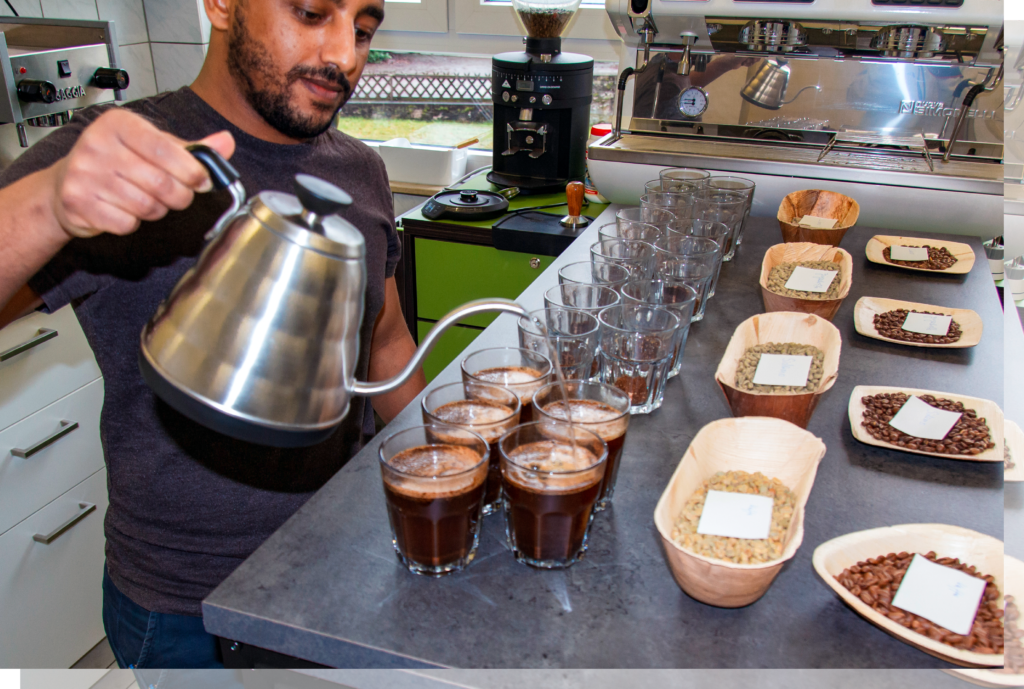Laboratories
The analysis of the coffee completes the quality assurance. It represents the interface between the quality requirements that the consumer himself places on the product and those that the legislator places on the product in the form of legal regulations. The quality of green coffee is the result of an interplay between environmental factors, such as climate and rainfall, and growing conditions, such as the length and soil of the farms, as well as field management.
The correct processing and storage of the coffee, both on the farms and in transit, is also important. The green coffee samples are examined by experienced inspectors either in sample trays under a daylight lamp. The classification is based on objective criteria such as shape, colour and odour. The colour indicates the freshness, moisture content and homogeneity of the beans. Defective beans that deviate in shape or colour can be detected during the visual inspection. Even if not all deviations in shape or colour have an impact on the taste, the proportion of beans that are defective as well as the proportion of coffee-own or non-coffee components in the green coffee allow conclusions to be drawn about the care taken in the selection of the beans. The smell gives an indication of its age, freshness, and moisture.
The green coffee must not be stored and transported too moist. ENKU therefore examines the green coffee, as well as the prepared beverage, in its own laboratory in order to determine whether the requirements of the legal regulations are met. Thus, the green coffee is tested in regards to its moisture level and texture in the laboratory. Any coffee with more than 11.5% moisture content and 8% impurities by volume will be rejected.



